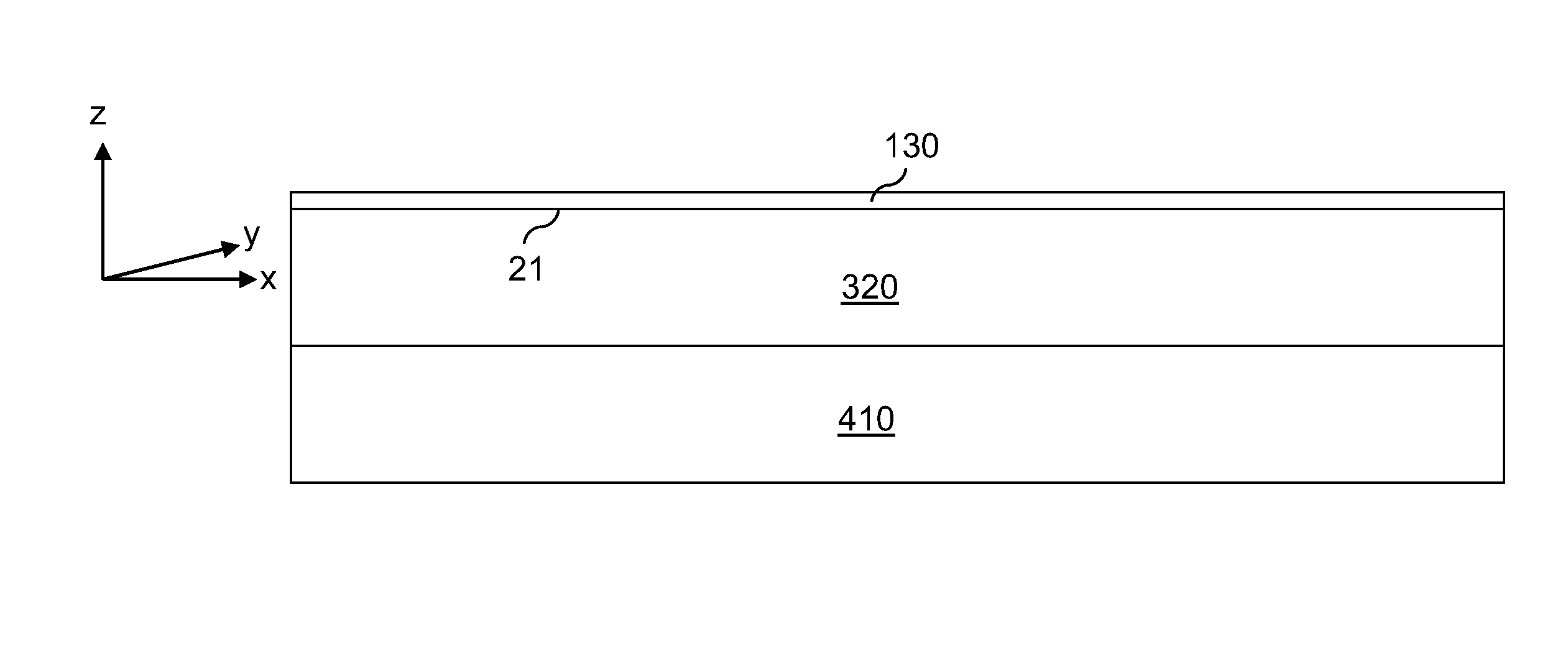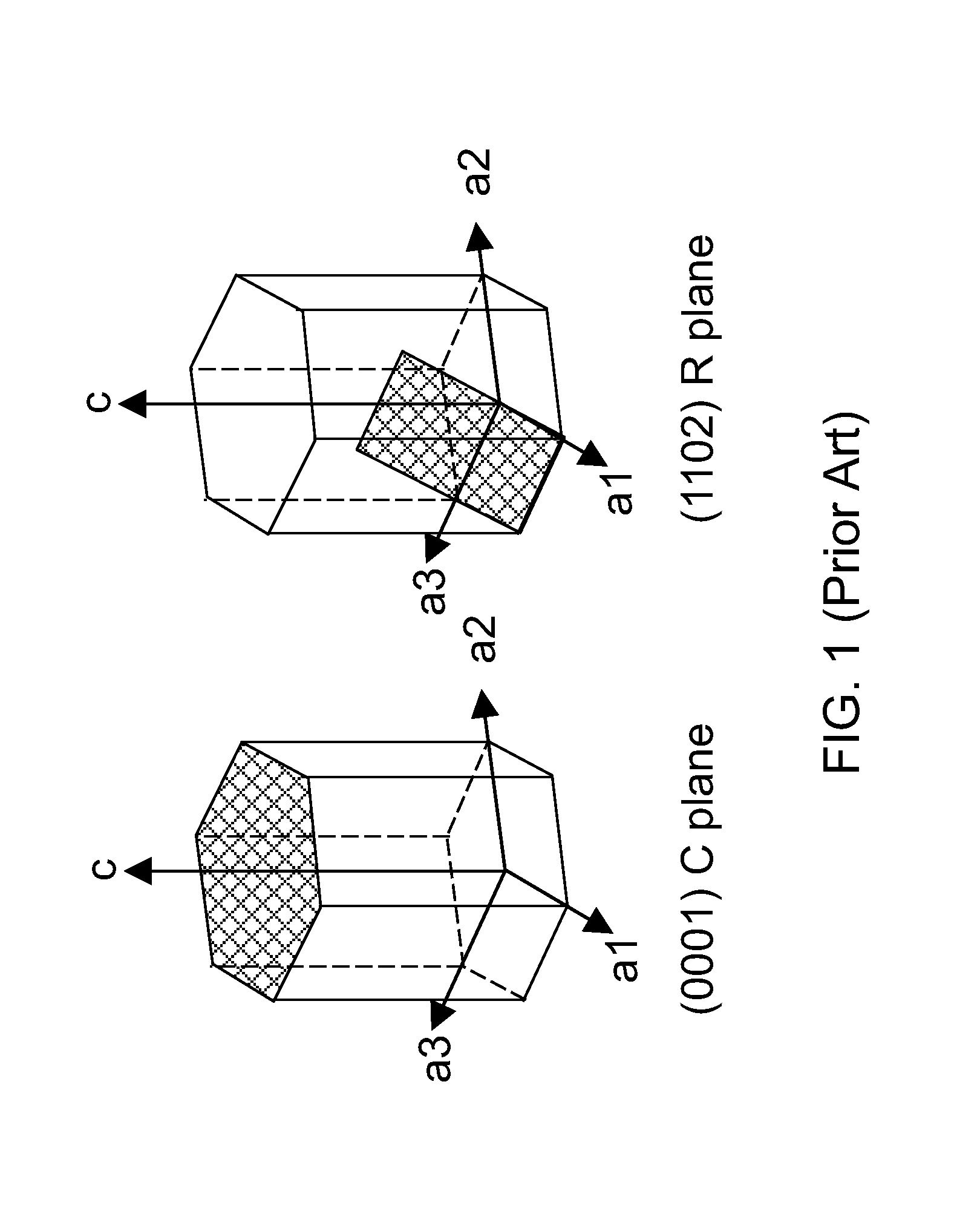Formation of a graphene layer on a large substrate
a graphene layer and substrate technology, applied in the direction of basic electric elements, electrical equipment, semiconductor devices, etc., can solve the problems of limited epitaxy formation of graphene on a hexagonal surface of silicon carbide crystals, inability to provide 200 mm substrates or 300 mm substrates containing graphene layers, and inability to perform epitaxy on substrates having a diameter of 6 inches or greater, etc., to achieve the effect of low cos
- Summary
- Abstract
- Description
- Claims
- Application Information
AI Technical Summary
Benefits of technology
Problems solved by technology
Method used
Image
Examples
first embodiment
[0053]Referring to FIG. 2, a first exemplary structure including according to the present invention includes a vertical stack of a single crystalline semiconductor-carbon alloy layer 120 and a sapphire substrate 110. The single crystalline semiconductor-carbon alloy layer 120 has a hexagonal crystal structure and a (0001) surface orientation. The single crystalline semiconductor-carbon alloy layer 120 is epitaxially deposited on a (0001) surface of the sapphire substrate 110.
[0054]The sapphire substrate 110 consists essentially of aluminum oxide, i.e., Al2O3, and may include trace amounts of impurities at concentrations that do not affect the crystal structure of the sapphire substrate 110. Typically, the trace amounts of impurities do not exceed 0.02% in atomic concentration. The entirety of the sapphire substrate 110 is single crystalline. Sapphire substrates are currently commercially available at diameters up to 8 inches. The surface orientation of the sapphire substrate 110 is ...
second embodiment
[0061]Referring to FIG. 3, a second exemplary structure including according to the present invention includes a vertical stack of a single crystalline semiconductor-carbon alloy layer 220 and a sapphire substrate 210. The single crystalline semiconductor-carbon alloy layer 220 has a cubic crystal structure of zinc blende type and a (110) surface orientation. The single crystalline semiconductor-carbon alloy layer 220 is epitaxially deposited on a (1102) surface of the sapphire substrate 210.
[0062]The sapphire substrate 210 consists essentially of aluminum oxide as in the first embodiment. The entirety of the sapphire substrate 210 is single crystalline. However, the surface orientation of the sapphire substrate 210 is a (1102) orientation. The plane of the (1102) orientation is also referred to as an R plane.
[0063]The single crystalline semiconductor-carbon alloy layer 220 is a single crystalline layer in which all atoms are epitaxially aligned to all other atoms of the single cryst...
third embodiment
[0086]Referring to FIG. 16, a third exemplary structure according to the present invention includes a stack of a graphene layer 30 formed by graphitization, a single crystalline semiconductor-carbon alloy layer 120, and a sapphire substrate 110 having a (0001) surface orientation. The single crystalline semiconductor-carbon alloy layer 120 has a hexagonal crystal structure, i.e., in alpha phase. The third exemplary structure is derived from the first exemplary structure by graphitizing a surface portion of the single crystalline semiconductor-carbon alloy layer 120. Specifically, the graphene layer 30 is formed directly on the top surface 21 of a remaining portion of the single crystalline semiconductor-carbon alloy layer 120 by conversion of a top layer of the single crystalline semiconductor-carbon alloy layer 120. The conversion can be effected by evaporating semiconductor atoms from the top layer at an elevated temperature, for example, from 800° C. to 2,000° C. The graphene lay...
PUM
| Property | Measurement | Unit |
|---|---|---|
| temperature | aaaaa | aaaaa |
| thickness | aaaaa | aaaaa |
| length | aaaaa | aaaaa |
Abstract
Description
Claims
Application Information
 Login to View More
Login to View More - R&D
- Intellectual Property
- Life Sciences
- Materials
- Tech Scout
- Unparalleled Data Quality
- Higher Quality Content
- 60% Fewer Hallucinations
Browse by: Latest US Patents, China's latest patents, Technical Efficacy Thesaurus, Application Domain, Technology Topic, Popular Technical Reports.
© 2025 PatSnap. All rights reserved.Legal|Privacy policy|Modern Slavery Act Transparency Statement|Sitemap|About US| Contact US: help@patsnap.com



